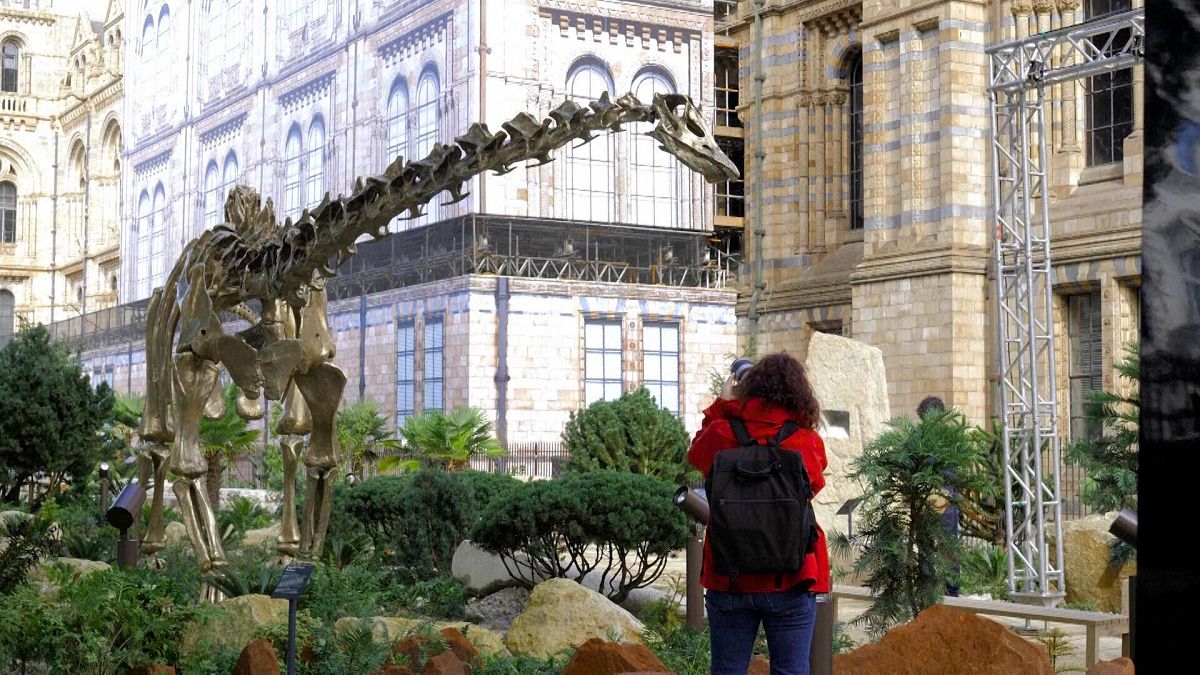Dippy the diplodocus is back at London's Natural History Museum - only she's now called Fern and she's moved to prime position in the museum's revamped gardens. The in London is set to open its newly revamped gardens, a five-year project costing £25 million (€29.7m), located just outside its main entrance.
Among the highlights of the gardens is Fern, a magnificent 26-metre-long bronze cast of a Dippy the diplodocus, the museum’s much-loved centrepiece and who is currently on a national tour. "It's a bronze replica of Dippy, the diplodocus who used to grace the Natural History Museum Central hall," says Professor Susannah Maidment, a palaeontologist at the Natural History Museum. Dippy is very much an indoor , but in bronze Fern will brave the elements and is now a permanent fixture at the museum.

“The diplodocus is a big herbivore. This one is 22m long, and it spans four metres at the hips. So it's one of the biggest animals ever to walk the earth and it lived in the upper Jurassic period about 150 million years ago," says Maidment.
The Jurassic landscape surrounding Fern is one of two new gardens that now occupy the five acres of land surrounding the museum. The first is the Evolution Garden where visitors will walk through 2.7 billion years of the history of our planet.
It is a timeline of the which have formed through the Earth’s violent past and opens out into a wider . Palaeontologist Dr Paul Kenrick, the principle researcher at the Natural History Museum says: .























